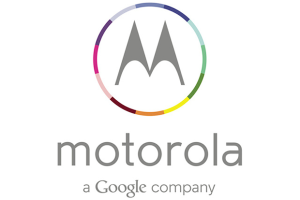 Following its US$12.5 billion acquisition by Google in mid-2012, Motorola was fairly quiet until this summer when it re-emerged with the Moto X and last month the Moto G. The two devices suggest that Motorola is looking to take a slightly different path from other smartphone manufacturers in a bid to differentiate itself and re-establish itself as a strong competitor in this arena. In an interview with the Associated Press, Motorola CEO Dennis Woodside touched upon a number of topics including the company’s relationship with Google as well as some hints as to where we could see Motorola head in 2014.
Following its US$12.5 billion acquisition by Google in mid-2012, Motorola was fairly quiet until this summer when it re-emerged with the Moto X and last month the Moto G. The two devices suggest that Motorola is looking to take a slightly different path from other smartphone manufacturers in a bid to differentiate itself and re-establish itself as a strong competitor in this arena. In an interview with the Associated Press, Motorola CEO Dennis Woodside touched upon a number of topics including the company’s relationship with Google as well as some hints as to where we could see Motorola head in 2014.
While Motorola continues to operate independently, parent company Google gives Motorola something that few other companies have, according to Woodside. As he explains:
Google gives Motorola a couple things. One is that willingness to have a long-term vision that’s bold, and really encouraging us to have that vision, and giving us the capital to make the transition. You also have to (believe in) the long-run value of having everybody connected on high-quality devices that can access all the services that we’re used to. Only Google has that long-term mindset.
At the same time, Google has “really high” expectations for Motorola. And while Motorola’s new strategy is starting to become clear, it is still a company in transition, not only from a company that was once 20,000 strong but now employing only 3,800 but also in terms of shifting corporate mindset as it moves to take more direction from its customers.
Woodside sees a number of trends extending into 2014. He hit upon the familiar Motorola theme of more robust smartphones. “Phones break. They’re glass. That’s likely to change in the next 24 months, as plastic becomes more present and producible,” he explained. Could this be a hint that Motorola is also looking at flexible displays for 2014?
We can also expect Motorola to continue to focus on its Touchless Control which lets its respond to voice-activated commands (“Ok Google Now”). “You’ll be speaking to (the) phone, asking it to do things, and it will be responding and actually doing what you intend, as opposed to you reading a command line,” says Woodside.
Wearable technology is another area to keep an eye on. A comment that no one has yet to solve this area suggests that Motorola is carefully watching and likely playing with concepts of its own. With Google’s eye on the long-term, Motorola may well have the time to make sure it comes up with an innovative product rather than simply rush in with a device that is not quite ready.
All in all, the interview is well worth a read. Not everything is new but it does give a good glimpse at how Woodside and Motorola see its present situation and where it wants to go.
Source : Yahoo News
